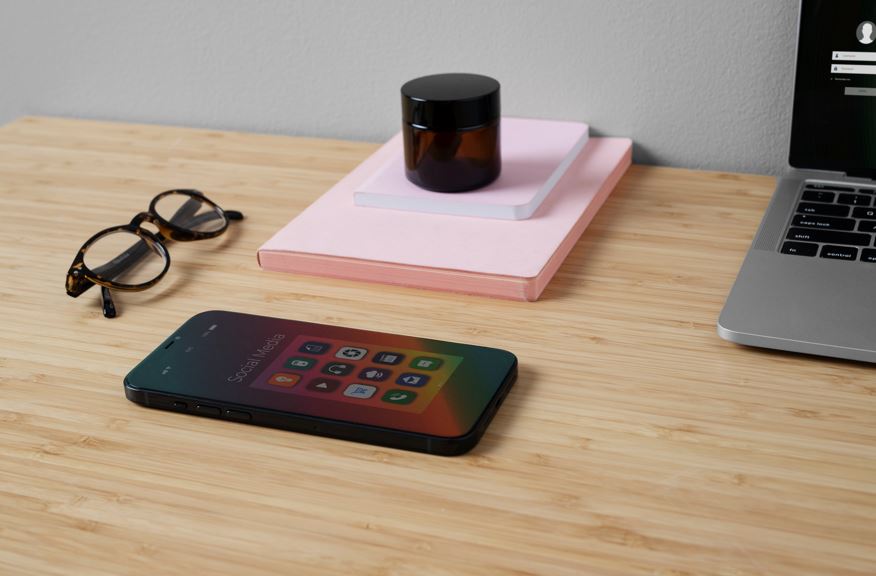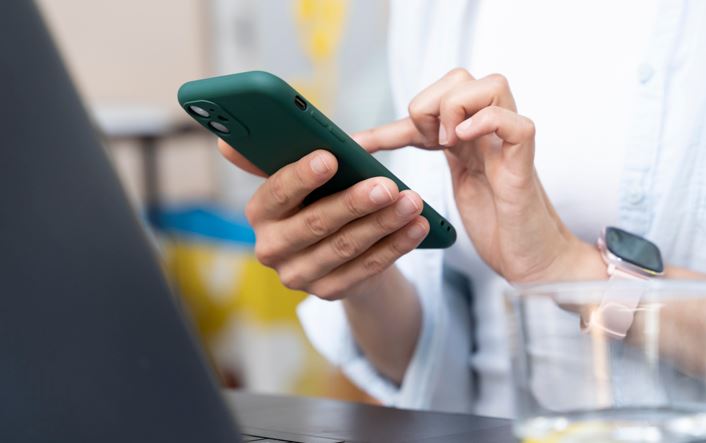How do you track your phone .We show you the best methods to locate your smartphone
21st May 2024
Diane Marley
It is common to experience that sinking feeling in the stomach when misplacing a phone. This article covers various aspects related to losing a phone and provides solutions to address this issue.
The content will delve into the reasons behind phone loss, the importance of tracking a lost phone, and effective methods to locate a smartphone using both built-in functionalities and third-party applications. Additionally, precautions before tracking the phone and steps to follow if the device remains untraceable will be discussed.
Continue reading to enhance your knowledge and prevent future instances of phone misplacement.
Why Do You Need to Track Your Phone?
Monitoring your phone is important in today's digital age to guarantee the safety and security of your smartphone. By being aware of your device's location, you can easily locate it in case of misplacement or theft.
Apart from the convenience of finding your lost device, phone tracking also adds a layer of security by allowing you to remotely lock or wipe your data if there's unauthorized access. As smartphones are increasingly used to store personal and sensitive information, securing your device with tracking methods or apps has become essential. These tools not only provide peace of mind but also act as a proactive measure against potential security risks, ensuring that your data stays protected at all times.
What Are the Common Reasons for Losing a Phone?
Phones are commonly lost or stolen due to carelessness, theft, or simply misplacement. The ability to track the location of a phone using signals, IMEI numbers, or tracking software helps in recovering lost devices.
In cases of carelessness, phones are often left behind in public places, such as restaurants, taxis, or coffee shops, leading to their loss. On the other hand, theft can occur in crowded areas where pickpockets may target individuals for their valuable devices. Misplacement is another common scenario where people may forget where they last placed their phones.
Utilizing tracking features like GPS signals and specialized apps can play a crucial role in locating lost phones quickly. The unique IMEI number assigned to each device is a vital identifier that assists authorities in tracking and recovering stolen phones. Swift action is essential when a phone goes missing to increase the chances of successful retrieval.
What Are the Risks of Not Tracking Your Phone?
Failing to track your phone can lead to various risks, such as the loss of personal data, vulnerability to theft, and the inability to protect sensitive information stored on the device.
Without adequate tracking, there is a heightened risk of data breaches, allowing malicious entities to access personal information. The likelihood of device theft also rises, increasing the chances of unauthorized access to sensitive data. By activating tracking features on your phone, you can protect your personal information and maintain the security of your device, discouraging potential threats from compromising your data.
How to Track Your Phone Using Built-In Features?
Incorporated functionalities such as Find My Device for Android, Find My for iPhone, and Windows Phone provide effective methods to track the location of a smartphone utilizing GPS technology and specialized applications. These tracking capabilities serve as valuable resources for locating a lost or stolen device.
To utilize these features efficiently on an Android device, users can navigate to the Google Settings, choose Security, and access Find My Device to ensure the toggle switch is activated. For iPhone users, accessing the Settings app, selecting the Apple ID, and activating Find My enables the Find My iPhone feature.
By following these procedures, users can easily monitor their phone's whereabouts in real-time and initiate necessary actions for recovery.
1. Find My Device (Android)
The Find My Device feature is a built-in functionality for Android smartphones that enables users to track their device's location in real-time using GPS technology and a dedicated app.
This feature proves useful when a user misplaces their phone or if it is stolen, as it aids in identifying the precise location on a map. To make use of Find My Device, users must ensure that their device's location services are enabled, and the feature is activated in the device settings. Once activated, users can sign in to their Google account on a web browser or another device, access the Find My Device website, and locate their phone with a few simple clicks.
2. Find My (iPhone)
The Find My feature is a pre-installed function on iPhones that allows users to track their device's location through GPS technology and the Find My app, providing efficient and precise tracking capabilities.
When setting up Find My, users can easily activate the feature by accessing the Settings app, selecting their Apple ID, and choosing iCloud. They can then enable the Find My iPhone option to begin using this useful tool. After activation, users can open the Find My app to pinpoint their device on a map, emit a sound for locating it nearby, or activate Lost Mode to remotely lock the device and display a personalized message for anyone who discovers it. The incorporation of GPS technology guarantees accurate and real-time tracking to assist users in promptly finding their lost or stolen iPhones.
3. Windows Phone (Windows)
Windows Phone provides tracking capabilities through built-in features that enable users to locate their smartphones using GPS technology and dedicated apps, ensuring effective tracking functionalities.
By utilizing the GPS technology integrated into Windows Phones, users can accurately pinpoint the exact location of their device in real-time, whether it's misplaced or stolen.
Dedicated tracking apps available on the Windows Store enhance the tracking experience by offering additional features such as remote locking, wiping data, and even sounding alarms to help locate the phone.
Setting up these tracking features is simple, requiring users to enable location services and installing the preferred tracking app for comprehensive security and peace of mind.
How to Track Your Phone Using Third-Party Apps?
Various third-party apps like Find My iPhone for iOS, Google Maps for Android, and Prey Anti-Theft for both Android and iOS provide additional tracking functionalities beyond what the built-in features offer, enhancing the security of smartphones.
Find My iPhone, a popular app among iOS users, not only enables users to locate their device but also provides the option to remotely lock or erase it in case of theft.
On the other hand, Google Maps, a widely-used app on Android devices, offers real-time location sharing and detailed navigation tools, making it convenient for tracking the phone's whereabouts.
Meanwhile, Prey Anti-Theft distinguishes itself with its comprehensive anti-theft features such as remote data wiping, camera activation, and the ability to trigger loud alarms to discourage thieves.
1. Find My iPhone (iOS)
The Find My iPhone app is a third-party application designed for iOS devices. It offers advanced tracking functionalities that allow users to locate their devices, remotely lock or erase data, and implement comprehensive security measures for their smartphones.
This app proves particularly beneficial in situations where users misplace their devices or experience theft. It enables them to identify the precise location of their iPhone on a map. To utilize Find My iPhone effectively, users should ensure the app is installed and activated on their device before any incidents occur. By configuring location tracking and activating the Lost Mode feature, users can remotely lock their device with a passcode, display a custom message on the lock screen, and monitor the device's movements in real-time to potentially facilitate recovery.
2. Google Maps (Android)
Google Maps provides tracking features for Android devices, allowing users to determine their smartphone's location on a map, retrieve coordinates, and utilize real-time tracking features for increased security and peace of mind. By activating location services on an Android smartphone and giving permission to Google Maps, users can effectively leverage its tracking capabilities.
In instances of a lost or stolen phone, users can simply log in to their Google account on a web browser or another device, access the 'Find My Device' feature, and promptly track the phone's location. Users have the option to remotely ring, lock, or even erase the data on the device for added security measures.
3. Prey Anti-Theft (Android and iOS)
Prey Anti-Theft is an app with versatile features designed for both Android and iOS devices. It offers comprehensive tracking functionalities, remote device locking, data erasure, and theft protection features to effectively safeguard your smartphone.
By using Prey Anti-Theft, users can have confidence that their device is secure. The setup process is simple. Users can download the app from the respective app store, create an account, and log in to access the dashboard. From there, they can add their device and adjust the tracking settings.
If the device is stolen or lost, users can activate the tracking feature to locate the device in real-time. Additionally, users have the option to remotely lock the device or erase sensitive data to prevent unauthorized access.
What Are the Precautions to Take Before Tracking Your Phone?
Before beginning phone tracking, it is important to take necessary precautions such as enabling location services, setting up a passcode or biometric lock, and installing a reliable tracking app to ensure the security of the device.
Enabling location services on the phone allows for accurate tracking in case of loss or theft. Setting up a strong passcode or utilizing biometric locks adds an extra layer of security, safeguarding personal data from unauthorized access.
By utilizing tracking apps, one can proactively monitor the whereabouts of the device and take immediate action in case of any suspicious activity. These preemptive measures can significantly reduce the risks associated with potential phone loss or theft, ensuring that the device remains secure at all times.
1. Enable Location Services
Activating location services on a smartphone is an essential step to enhance accurate tracking and locating capabilities, ensuring efficient retrieval of the device when necessary.
In case of a lost or stolen device, enabling location services can make a significant difference. To enable this feature on a smartphone, users should access the settings menu, find the 'Privacy' or 'Security & Location' section (depending on the device), and switch on the 'Location Services' option. It is recommended to have both GPS and Wi-Fi options enabled for better accuracy. By granting the phone access to location data, the likelihood of swiftly locating it through GPS tracking applications or services is significantly increased.
2. Set Up a Passcode or Biometric Lock
Implementing a passcode or biometric lock on a smartphone adds an additional layer of security, protecting the device's data and preventing unauthorized access in the event of loss or theft.
By incorporating these security measures, the risk of sensitive information ending up in the wrong hands can be significantly reduced.
To set up a passcode, users should navigate to the phone's settings and choose the option to create a secure password. For biometric locks, such as fingerprint or facial recognition, users should follow the instructions to register their unique biometric data.
Periodically updating the passcode or re-scanning biometrics is crucial to maintaining maximum security. It is important to avoid sharing the passcode or allowing others to register their biometrics on the device to uphold confidentiality.
3. Install a Tracking App
The installation of a dedicated tracking app on a smartphone is a proactive step that enhances security and facilitates effective device tracking in the event of loss or theft. This provides a sense of security and options for quick recovery.
These tracking apps make use of advanced GPS technology to accurately determine the real-time location of the device, enabling remote tracking. Some apps offer additional functions such as device locking, remote data wiping, and activating an alarm for locating the device promptly.
Well-known tracking apps like Find My iPhone for iOS devices and Find My Device for Android devices are user-friendly and can be easily downloaded from their respective app stores. Setting up these apps typically involves creating an account, enabling location services, and granting necessary permissions for smooth operation.
What Are the Steps to Take If You Can't Find Your Phone?
If an individual is unable to locate their phone, using a friend's phone to track it, contacting their service provider for assistance, and promptly reporting the phone as lost or stolen are crucial steps to initiate the recovery process.
- To begin, one can try using an alternative device, such as a tablet or a computer, to access any tracking applications linked to the lost phone. This may help pinpoint its last known location.
- Contacting the service provider is essential as they can assist in tracking the device or remotely locking it for security purposes.
- It is important to remember to document any pertinent details, such as the IMEI number, to aid authorities in the recovery process.
1. Use a Friend's Phone
Using a friend's phone to track a missing device is a practical solution that allows access to tracking apps or services remotely, expediting the search process for a lost or stolen phone.
By using your friend's phone, you can open the tracking application associated with the lost device. After logging in, ensure that location services are activated to accurately pinpoint the current whereabouts of the missing phone. Many tracking apps offer features such as remotely locking your device or activating an alarm to aid in a quick location.
Utilizing a secondary device not only assists in tracking the phone's location but also helps in taking immediate action to secure personal data and prevent unauthorized access.
2. Contact Your Service Provider
It is important to contact your service provider when you are unable to locate your phone. They can assist in tracking the device through network signals, facilitating a more targeted search operation for your missing smartphone.
When you reach out to your service provider, you can benefit from their expertise in utilizing the network's triangulation techniques to determine the precise location of your device. Be prepared to provide necessary details such as your phone number, account information, and any specific circumstances related to the disappearance of your phone.
Engaging with your service provider not only increases the likelihood of finding your missing phone but also ensures that the tracking process is conducted efficiently and with the appropriate technical tools.
3. Report Your Phone as Lost or Stolen
Reporting your phone as lost or stolen to the necessary authorities and registering it in databases can help prevent unauthorized use, assist in recovery efforts, and increase the likelihood of successfully retrieving your device.
Promptly reporting the loss or theft of your phone not only involves taking proactive measures to protect your personal information but also aids in reducing illegal activities such as identity theft or fraud. Registering your device in databases establishes a digital trail that is vital in locating it. Informing the relevant authorities about the incident is crucial for starting investigations, which enhances the chances of finding and recovering your missing device. Taking these actions promptly can significantly boost the possibility of being reunited with your lost or stolen phone.















